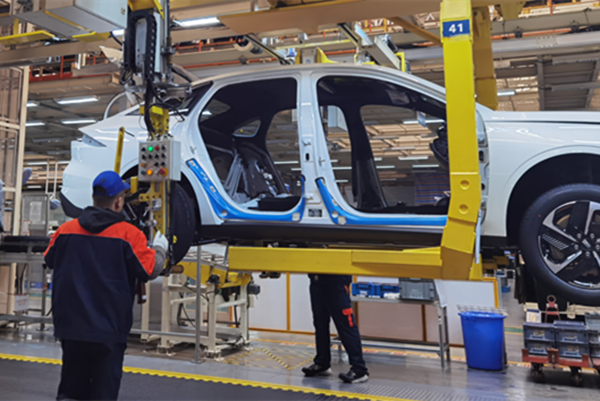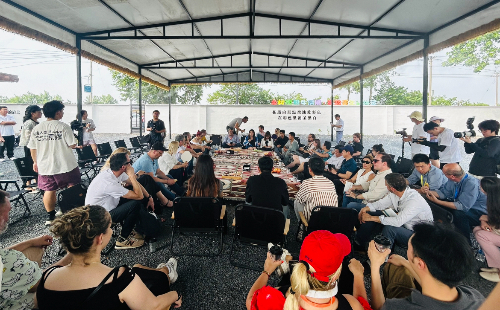Taizhou rides nation's energy transition wave

A car workshop in Taizhou, East China's Zhejiang province. [Photo/taizhou.com.cn]
As China strives to achieve its dual-carbon objectives of reaching peak carbon dioxide emissions before 2030 and attaining carbon neutrality by 2060, Taizhou, a coastal city in Zhejiang province, has emerged as a powerhouse driving the nation's and even the world's energy transition goals.
In a recent development, Asia Euro Automobile Manufacturing (Taizhou) Co Ltd exported 746 Polestar branded new energy vehicles to Los Angeles, the United States. This export marks the 611th shipment of new energy vehicles by the company since last year, providing a glimpse into the thriving new energy vehicle industry in Taizhou.
With over 6,000 carmakers and auto parts companies, including industry leaders such as Geely and BYD, Taizhou is experiencing explosive expansion in the new energy vehicle industry, with products primarily destined for the US, Europe, and the Middle East.
Official statistics reveal that Taizhou's new energy vehicle exports reached 21.37 billion yuan ($2.98 billion) in the first 11 months of 2023, representing a year-on-year increase of 43.7 percent and accounting for 69.4 percent of Zhejiang's total export value.
In addition to new energy vehicles, Taizhou has positioned itself as a global manufacturing hub for photovoltaic products. Leading companies in this sector, such as Zhejiang ERA Solar Technology Co Ltd and Jinko Solar Co Ltd, have contributed to this achievement.
Jinko Solar, the world's largest integrated photovoltaic manufacturer, operates 14 production bases and 35 overseas branches, exporting its products to over 190 countries. Impressively, one out of every eight installed solar modules worldwide is produced by Jinko Solar.
Last year, Jinko Solar embarked on its photovoltaic cell module project in Yuhuan, a county-level city within Taizhou. The project, with an investment of 8 billion yuan, aims to achieve a total capacity of 40 GW in photovoltaic products. Upon completion, it is projected to generate an annual output value exceeding 70 billion yuan.





 play
play